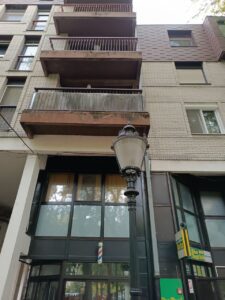Changes in the city plan of Subotica over the last century
Subotica, a charming city in northern Serbia, has long been a melting pot of cultures and architectural styles. Over the past century, its city plan has undergone notable transformations aligned with historical events, economic shifts, and cultural influences. This article takes you on a journey through the changing landscape of Subotica, exploring the evolution of its urban development and the intricate tapestry of life that it fosters.
The Historical Context
The history of Subotica is woven with tales of war, change, and resilience. The city experienced significant transformations after World War I when it became part of the newly formed Kingdom of Serbs, Croats, and Slovenes. This shift prompted a surge in urban planning efforts to accommodate a growing population of diverse ethnic and cultural backgrounds. Streets were widened, infrastructures were improved, and new public buildings were erected, reflecting the aspirations of a city striving for modernization.
The period between the two World Wars ushered in architectural influences from both Central European and Art Nouveau styles. This era saw the integration of public spaces like parks and squares, which not only improved the urban aesthetic but also fostered community interactions. Notably, the iconic City Hall was completed in 1912, becoming a symbol of local pride and exceptional design. It was a time when the city’s planners drew upon the unique cultural heritage of Subotica, laying down the groundwork for a richly textured urban landscape.
However, the aftermath of World War II brought about another wave of change. As Subotica became part of socialist Yugoslavia, the city planning embraced functionalism, characterized by practical designs. The aim was to build a self-sufficient city that could respond to the needs of its citizens. The construction of large residential blocks and industrial districts commenced, fundamentally reshaping the urban fabric. This shift toward functionality marked a significant departure from the ornate designs that had previously dominated the cityscape.
Modernization and Urban Restructuring
As the 21st century approached, Subotica began to embrace modernization while grappling with the legacy of its past. With an influx of foreign investments and a growing tourism sector, the city saw an urge to refurbish and renovate its historical sites to attract more visitors. As a result, efforts to restore and maintain the beautiful Art Nouveau buildings began, filling the streets with vibrant life while paying homage to their architectural worth.
Concurrently, urban planners turned their attention to sustainability and environmental considerations. New developments began to prioritize green spaces, pedestrian pathways, and bicycle lanes, reflecting a broader global movement towards eco-cities. The introduction of parks and revitalization of neglected areas in the city plan highlighted a commitment to enhance the quality of life for Subotica’s residents while addressing climate challenges. The transformation of areas like the town square into pedestrian-friendly zones serves as both a historical reminder and a blueprint for future urban planning.
Moreover, tech innovation also began to seep into Subotica’s urban structure. Smart city initiatives introduced intelligent traffic systems, public Wi-Fi, and energy-efficient lighting, aiming to modernize the city while maintaining its cultural essence. The incorporation of digital technologies reflects a commitment to adapting to the needs of an increasingly tech-savvy population, breathing new life into Subotica’s beloved spaces.
Community Influence and Civic Engagement
The evolution of Subotica’s city plan is not just an administrative affair; it’s a community-driven process that reflects the voice of its citizens. Local organizations and civic groups have played an essential role in advocating for green spaces, cultural events, and public art projects. Their efforts have ensured that the urban landscape is not only functional but also vibrant and reflective of the community’s identity.
Community engagement became especially pronounced during discussions surrounding new developments. Citizens voiced their concerns about preserving historic sites and minimizing urban sprawl. Over the years, public forums and workshops emerged as platforms for citizens to contribute to the planning process, creating a sense of ownership over their environment. By involving residents in the mix, planners acknowledged the importance of grassroots influences in shaping a city that embodies both heritage and progress.
Subotica’s transformation over the past century exemplifies the delicate balance between modernization and preservation, showcasing how a city can embrace its cultural legacy while embarking on new ventures. This ongoing dialogue between the city’s history and its residents enriches Subotica, enhancing the overall living experience while honouring its rich, diverse past.
From majestic architectural styles to vibrant community-driven initiatives, Subotica has indeed come a long way. The changes in the city plan over the last century reflect the city’s ability to adapt and evolve amidst the ever-shifting socio-political landscape. Today, Subotica stands not just as a city of historical significance, but also as a contemporary testament to how inclusive urban planning can create lively, enduring communities. As we look ahead, the challenge remains to preserve its unique essence while continually embracing the future.


